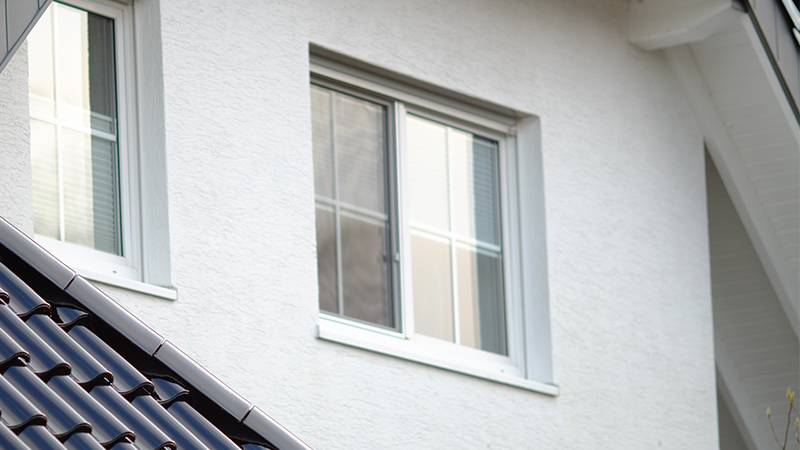Ever wondered how your windows could play a key role in your eco-friendly home journey? Let me tell you, energy-efficient windows are more than just panes of glass; they’re a gateway to sustainability.
I remember the first time I swapped out my old windows for these modern marvels – the difference in my home’s comfort and energy bills was astounding.
In this article, we’re diving deep into the world of energy-efficient windows. From understanding what they are to choosing the right ones and reaping their numerous benefits, I’ve got you covered. Let’s embark on this enlightening journey together!
Understanding Energy-Efficient Windows
Have you ever put on sunglasses to shield your eyes from the sun’s glare and felt immediate relief? Energy-efficient windows work similarly for your home, acting as a protective barrier, but instead of just blocking sunlight, they maintain your home’s ideal climate.
At their core, energy-efficient windows are designed to prevent unwanted heat gain and loss, ensuring your home stays warm in the winter and cool in the summer.
This is primarily achieved through two key technologies: low-E (low emissivity) glass and double glazing. Low-E glass has a microscopic coating that reflects infrared light, keeping heat inside during winter and outside during summer, while still letting in visible light. Think of it as a thermal blanket for your windows.
Double glazing, on the other hand, involves two panes of glass with a space in between – usually filled with an inert gas like argon – which acts as an insulation layer. It’s akin to wearing a double-layered coat in a chilly weather; the air or gas layer traps heat, providing a buffer against the cold.
But it’s not just about the glass. The frames play a significant role too. Materials like vinyl, fiberglass, and wood, each add their own insulating properties and contribute to the overall thermal performance of the window. It’s like choosing the right frame for a painting, but here, the choice impacts your home’s energy efficiency.
Furthermore, energy-efficient windows are often Energy Star rated, a symbol of their compliance with energy-saving standards. Installing these windows can lead to significant energy savings, with some estimates suggesting that switching to energy-efficient windows can save you 20-30% on your energy bills.
In addition to keeping your home comfortable, these windows also help in reducing your carbon footprint. By using less energy for heating and cooling, you’re directly contributing to a reduction in greenhouse gas emissions, aligning your home with sustainable living practices.
So, when you opt for energy-efficient windows, you’re not just upgrading your home; you’re investing in a greener future. It’s a small step for your home but a giant leap towards environmental responsibility.
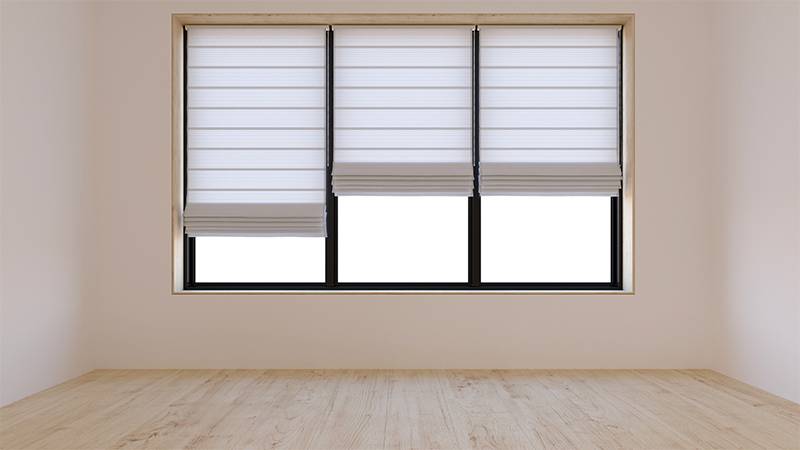
Benefits of Energy Efficient Windows
Lower Energy Bills
Energy-efficient windows are a game changer in reducing home energy bills.
Their advanced design, often featuring double or triple glazing and low-emissivity coatings, creates an insulating barrier that keeps your home’s internal climate more consistent.
This means less strain on your heating and cooling systems, as they don’t have to work as hard to compensate for heat loss in winter or heat gain in summer.
The result is a noticeable decrease in energy consumption, which translates directly into lower utility bills.
From my experience, the investment in these windows quickly pays off in savings, making them not just an eco-friendly choice but also a financially smart one.
Improved Comfort
Energy-efficient windows play a pivotal role in enhancing indoor comfort by stabilizing temperature fluctuations.
Their advanced construction, often featuring insulated frames and multiple layers of glass, creates a thermal barrier. This barrier effectively reduces the infiltration of cold drafts during winter and minimizes heat penetration during summer.
The result is a more consistent and comfortable indoor environment year-round.
In my own home, the difference was remarkable. Rooms that were once prone to chilly drafts or overheating became consistently comfortable, creating a more pleasant living space.
This improvement in thermal comfort is one of the most immediate and appreciated benefits of installing energy-efficient windows.
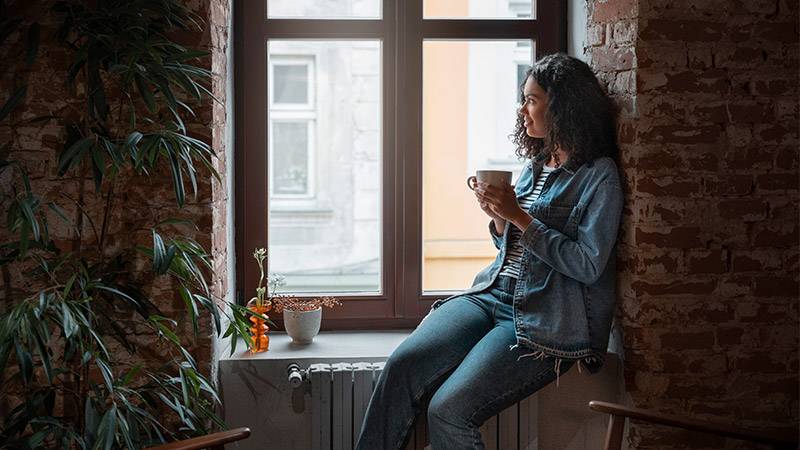
UV Protection
Energy-efficient windows often include a crucial feature: coatings that block harmful ultraviolet (UV) rays.
This UV protection is more than just a technical add-on; it’s a shield for your home’s interior. Sunlight can fade fabrics, artwork, and even flooring over time, but with these specialized coatings, the damaging effects of UV rays are significantly reduced.
In my home, I’ve noticed how furnishings and floors near windows have retained their color and integrity, free from the sun-bleached effects often seen with standard glass.
This protection extends the life and beauty of your interior decor, adding another layer of value to energy-efficient window installations.
Noise Reduction
The noise reduction benefit of energy-efficient windows is a boon, especially for those living in bustling urban areas or near busy streets.
The same features that make these windows great insulators against temperature fluctuations — like multiple panes of glass and gas fillings — also help in dampening external noise.
The difference in my home was like night and day; the once intrusive sounds of traffic, neighbors, and city life were significantly muted, creating a tranquil, serene indoor atmosphere.
This reduction in ambient noise not only enhances the calmness of your living space but also can positively impact stress levels and overall well-being.

Reduced Carbon Footprint
Installing energy-efficient windows is a meaningful step towards reducing your home’s carbon footprint. By significantly cutting down the energy required for heating and cooling, these windows contribute to a substantial decrease in greenhouse gas emissions.
Traditional windows often lead to excessive energy use due to heat loss in winter and heat gain in summer. However, energy-efficient models counteract this, leading to lower energy consumption and, consequently, fewer emissions.
In my experience, making this eco-friendly choice not only aligns with a commitment to environmental stewardship but also fosters a sense of responsibility towards creating a sustainable future, one window at a time.
Increased Property Value
Energy-efficient windows are a smart investment, enhancing a property’s appeal and market value. Today’s homebuyers are increasingly environmentally conscious and value energy efficiency, both for its cost savings and environmental impact.
Homes equipped with such windows often stand out in the real estate market, offering a compelling selling point. These windows signify a modern, eco-friendly home, promising lower energy bills and improved comfort.
In my experience, this upgrade not only elevates the aesthetic appeal of a property but also its practical value.
Consequently, homes with energy-efficient windows can command a higher resale value, making them a financially savvy choice for homeowners looking to future-proof their investment.
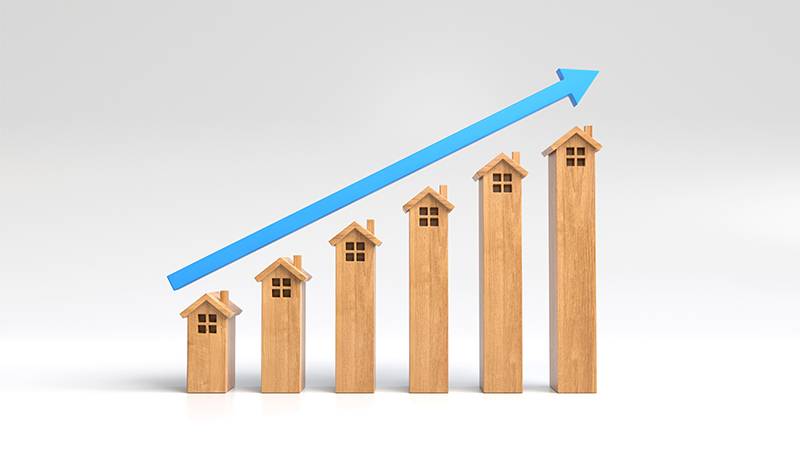
Factors to Consider When Shopping for Energy-Efficient Windows
Embarking on the journey to find the perfect energy-efficient windows can feel like navigating a maze with numerous paths and choices.
But worry not! Let me share some key factors you should consider, peppered with insights from my own experiences.
U-Factor
U-Factor is a critical metric when assessing the thermal efficiency of windows, especially in regions that experience harsh winters.
It essentially tells you how effective the window is at trapping heat inside your home. The lower the U-factor, the better its insulating properties.
This is crucial because windows with a high U-factor can lead to significant heat loss, forcing your heating system to work overtime just to maintain a comfortable indoor temperature.
This was a lesson I learned firsthand during my first winter in a home with outdated windows. The chill seeping through the glass was palpable, and my heating system seemed to run endlessly, trying to compensate for the lost warmth. The result?
An alarmingly high heating bill that made me realize the importance of investing in windows with a low U-factor.
Upgrading to windows with a better U-factor transformed my living space into a cozy winter haven and brought my energy costs down significantly, a change that was both financially and physically comforting.
Solar Heat Gain Coefficient (SHGC)
The Solar Heat Gain Coefficient (SHGC) is a pivotal factor in window selection, particularly in areas that experience intense and prolonged summer heat.
It measures the fraction of solar radiation admitted through a window – both directly transmitted and absorbed, then subsequently released inward.
A window with a lower SHGC is more effective at blocking out the sun’s heat, making it ideal for warmer climates where keeping a home cool is a priority.
Imagine it as sunscreen for your house, providing a shield against the sun’s fierce rays. This becomes especially significant during peak summer months when the sun is at its strongest.
Without efficient windows, your air conditioning system can be overwhelmed, trying to counteract the continuous influx of heat, leading to increased energy consumption and higher utility bills.
By choosing windows with a suitable SHGC, you can maintain a cooler, more comfortable home environment, while also being kinder to your wallet and the environment. This aspect of window technology is not just about comfort; it’s about smart, energy-efficient living.

Air Leakage
Air leakage in windows is a measure that often doesn’t get the attention it deserves, yet it plays a vital role in maintaining a home’s energy efficiency and comfort. It refers to the amount of outside air that infiltrates your home through the window assembly.
In areas prone to strong winds or extreme weather, the impact of air leakage becomes particularly noticeable. Windows with high air leakage not only let in drafts but also significantly disrupt the internal temperature regulation, leading to increased energy usage as heating or cooling systems work harder to compensate.
I vividly recall the persistent drafts in my study, which were especially distracting during windy days. However, once I replaced my old windows with ones designed for lower air leakage, the difference was immediate and remarkable. The drafts were gone, and the room maintained a consistent temperature, enhancing both comfort and efficiency.
It’s a change that underscores the importance of considering air leakage ratings when choosing windows, especially for those living in areas where the elements can be unrelenting.
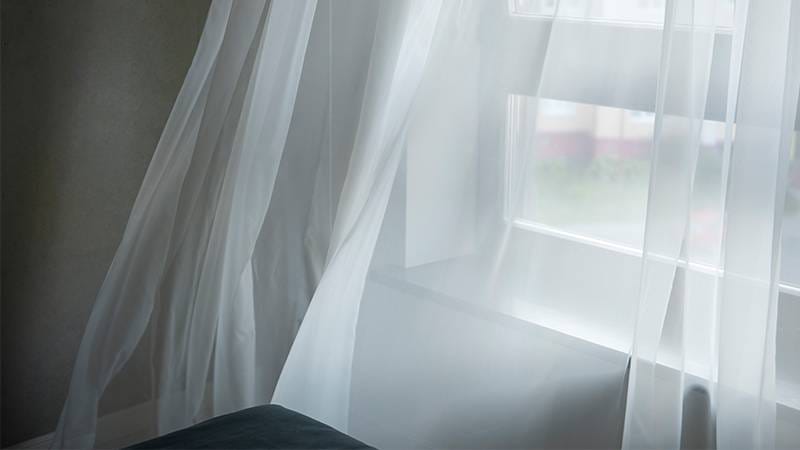
Window Glazing
Window glazing is an essential feature in modern window technology, where the choice between double and triple glazing can make a significant difference in a home’s insulation and noise reduction capabilities.
Double glazing involves two panes of glass with a space in between, usually filled with an inert gas like argon, which acts as a barrier against temperature changes and noise.
Triple glazing takes this a step further by adding an additional pane, thereby enhancing the insulation and soundproofing qualities even more.
When I upgraded to triple-glazed windows in my home, the impact on noise reduction was nothing short of transformative. Living in a busy neighborhood, the constant hum of traffic and city life was a relentless presence. However, with the installation of triple-glazed windows, the intrusive sounds were significantly muted, creating a serene and peaceful indoor environment.
This not only improved the comfort of my living space but also contributed to a more stable indoor temperature, showcasing the dual benefits of advanced window glazing in both noise reduction and thermal efficiency. The tranquility it brought to my home was a clear testament to the power of high-quality window glazing.
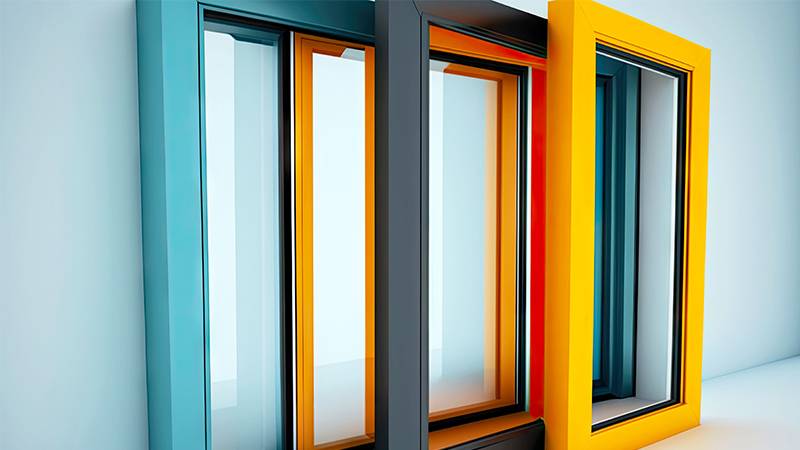
Frame Material
Choosing the right frame material for your energy-efficient windows is a decision that balances insulation, durability, and maintenance.
Vinyl frames are a popular choice due to their low maintenance needs and good insulation properties. They resist weathering and don’t require painting or staining, making them ideal for those who prefer minimal upkeep.
Wood frames, offering a classic aesthetic, are excellent insulators but demand more maintenance, including regular treatments to prevent decay. They are favored for their natural beauty but involve a commitment to upkeep.
Fiberglass frames offer the best of both worlds, combining durability with low maintenance. They resist weather and temperature changes effectively and can be painted, providing design flexibility. While more expensive, their longevity makes them a cost-effective choice in the long run.
Each material has its unique advantages, so your choice should align with your lifestyle, home’s architectural style, and personal preferences.
Energy Star Rating
The Energy Star rating on windows is a crucial indicator of their efficiency and environmental friendliness. This label, a trusted symbol for energy performance, is awarded by the U.S. Environmental Protection Agency (EPA) to products that meet rigorous energy efficiency guidelines.
Windows carrying the Energy Star label have undergone extensive testing and are proven to significantly reduce energy consumption.
This not only leads to lower utility bills but also minimizes the environmental impact by reducing greenhouse gas emissions.
In my own experience, choosing Energy Star-rated windows was a decision that paid off in multiple ways. Not only did I notice a reduction in my energy bills, but the comfort level of my home improved dramatically due to the superior insulation and temperature regulation these windows provided.
Furthermore, by opting for Energy Star-rated products, I felt a sense of responsibility towards the environment, knowing that my choice was contributing to a larger effort of conserving energy and promoting sustainability.
It’s a small step that each of us can take, which collectively makes a significant impact on our planet’s health.
Aesthetic and Design
When selecting energy-efficient windows, it’s crucial to strike a balance between functionality and aesthetics. The design and appearance of the windows should harmoniously blend with your home’s architectural style, enhancing its overall character and appeal.
In my own home, which has a modern architectural design, choosing sleek, energy-efficient windows not only improved insulation but also elevated the building’s aesthetic appeal. The clean lines and minimalist design of the windows I selected perfectly complemented the contemporary feel of my home, seamlessly integrating style with energy efficiency.
It’s important to remember that windows are a prominent visual element of any house. They can either enhance or detract from the architectural beauty.
Whether your home is traditional, contemporary, or somewhere in between, there’s an energy-efficient window design that can match. From classic wood-framed, double-hung windows for a traditional look to large, unobstructed glass panes in aluminum frames for a modern touch, the options are plentiful.
By carefully selecting windows that suit your home’s style, you can ensure that your eco-friendly choices also contribute positively to its aesthetic charm, making your living space not only more energy-efficient but also visually appealing.
Choosing the Right Energy-Efficient Window for Your Home
Selecting the perfect energy-efficient window for your home is an art that balances style, functionality, and your unique needs. Here’s how to make the choice that’s right for you:
Consider Your Home’s Style
Each home has its own character, and your windows should complement it. For example, traditional homes often benefit from wood-framed, double-hung windows, which add a classic touch. In my modern home, I opted for sleek, vinyl-framed windows that enhanced its contemporary look. Remember, windows are a key element in your home’s curb appeal.
Account for Your Climate
The climate you live in dictates your window needs. In colder regions, look for windows with a low U-factor for better thermal insulation. In warmer areas, a lower solar heat gain coefficient (SHGC) is desirable to keep the heat out. I reside in a mixed climate, so I chose windows with a moderate U-factor and SHGC, striking a balance between heat retention and reflection.
Personal Needs and Preferences
Are you looking for low maintenance? Vinyl might be your best bet. Concerned about environmental impact? Look for windows with recycled materials. I prioritized energy savings and UV protection, so I chose windows with low-E coatings and Energy Star ratings.
Consult with Professionals
Navigating the plethora of options can be overwhelming. A professional can provide invaluable advice. Look for someone with experience in eco-friendly home construction and renovations. They should be knowledgeable about the latest technologies in energy-efficient windows, including thermal curtains and passive solar design.
Energy-Saving Tips for Window Efficiency
Maximizing the energy efficiency of your windows is not just about selecting the right product; it’s also about employing smart strategies to enhance their performance. Here are some practical tips I’ve gathered over the years:
Use Thermal Curtains
Adding thermal curtains to your windows can further insulate your home, reducing heat loss in winter and heat gain in summer. I noticed a significant difference in maintaining a stable indoor temperature after installing them.
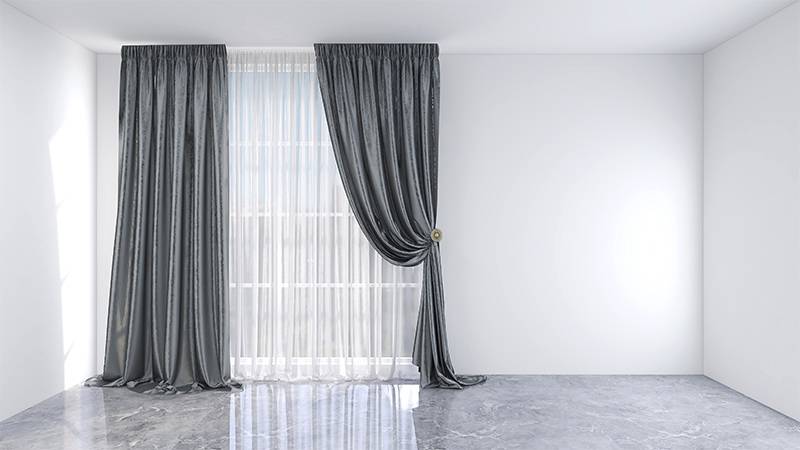
Regular Maintenance
Ensure your windows are well-maintained. This includes checking for and sealing any leaks, especially in older windows, to prevent air infiltration.
Install Window Films
For additional UV protection and heat regulation, consider applying energy-efficient window films. They are especially useful in areas with intense sun exposure.
Utilize Natural Ventilation
On cooler days, open your windows to allow natural ventilation. This reduces the need for air conditioning, embracing passive solar design principles for natural cooling.
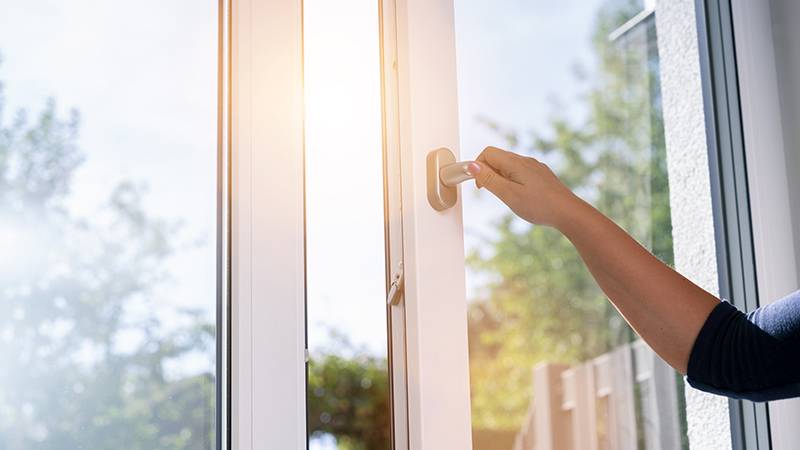
Proper Installation
Ensure your windows are correctly installed. A poorly installed window can negate its energy efficiency benefits. Hiring a professional with expertise in eco-friendly renovations can make all the difference.
Seasonal Adjustments
Adjust your window treatments seasonally. In winter, open them during the day to let in sunlight and close them at night to keep the heat in. In summer, use shades or blinds to keep the sun out during the hottest parts of the day.
Conclusion
In wrapping up, energy-efficient windows are more than just an upgrade; they’re an investment in a sustainable, comfortable future.
From slashing energy bills and enhancing comfort to protecting your interiors and reducing noise, these windows are a cornerstone of eco-friendly living. By choosing the right windows for your home and adopting energy-saving practices, you play a part in a larger environmental mission.
So, I encourage you to take the next step towards greener living. Consider energy-efficient windows for your next home renovation. Together, let’s build a future that’s not only brighter but also kinder to our planet.
